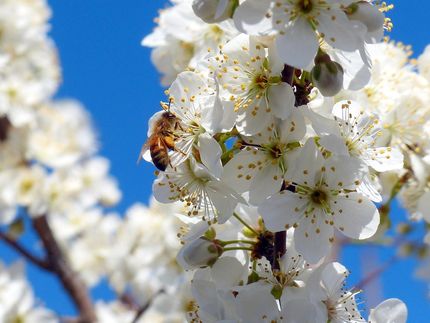Bees research shows not all neonicotinoids are the same
Advertisement
The group of chemical insecticides known as Neonicotinoids have been identified as presenting a serious risk to bee populations, leading to bans on their use. But at least one may be unfairly named among the offenders when it comes to risks to bumblebees, according to new research led by the University of Dundee.
The new study found that one of the neonicotinoid insecticides – clothianidin – did not show the same detrimental effects on bee colonies as its close chemical relatives imidacloprid and thiamethoxam. All three neonicotinoids have been subject to an EU-wide moratorium on their use.
Dr Chris Connolly, a Research Associate at the Centre for Environmental change and Human Rselience (CECHR) and Reader in the Division of Neuroscience at Dundee’s School of Medicine , is one of the leading authorities on the effects of neonicotinoids on bees. He has led this new study, involving both the University of Dundee and the University of St Andrews, which shows that each of the different neonicotinoids leads to differential risks for bumblebees.
“There has been growing concern over the risk to bee populations from neonicotinoid insecticides and their long-term consequences to essential ecosystem services and food security,” said Dr Connolly .
“Our knowledge of the risk of neonicotinoids to bees is based on studies of imidacloprid and thiamethoxam and these findings have generally been extrapolated to clothianidin.
“However, in this study we have looked at the three neonicotinoids in parallel. What we have found is that imidacloprid and thiamethoxam, but not clothiandin, exhibit toxicity to bumblebee colonies when exposed at field-relevant levels.
“There was also further variation in the effects on bees between the three insecticides. So we can clearly see that the banned neonicotinoids are not the same, so they should be considered independently when considering risk and legislation.
“From our findings, we consider that it is premature to place a permanent ban on the use of clothianidin. That said, a moratorium on its use should continue until the knowledge gaps are filled on its wider impact on other species.”
Funded under the Insect Pollinators Initiative , the researchers tested 75 bee colonies at five separate locations in Scotland.
Dr Connolly said the study once again confirmed the threat to bumblebees from use of imidacloprid and thiamethoxam.
“We have seen further evidence to indicate the risk from these insecticides, including deficits in colony strength,” he said.
“Given these findings, small changes in the pesticide structure or its target site in insects are likely to be critical to risk assessment and each pesticide/insect combination needs to be considered independently - evidence should not be extrapolated to similar chemicals or insects. Real risk must be determined empirically.”
Original publication
Christopher Moffat, Stephen T. Buckland, Andrew J. Samson, Robin McArthur, Victor Chamosa Pino, Karen A. Bollan, Jeffrey T.-J. Huang & Christopher N. Connolly; "Neonicotinoids target distinct nicotinic acetylcholine receptors and neurons, leading to differential risks to bumblebees"; Scientific Reports; 2016




























































